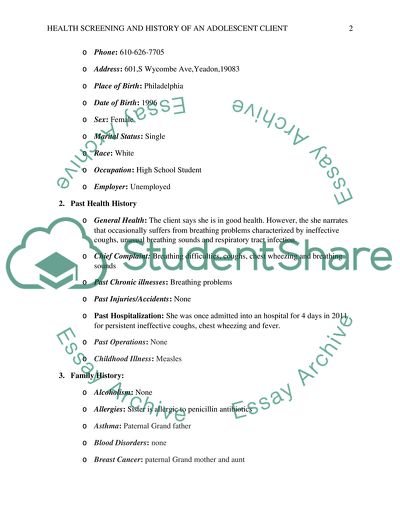Health Screening and History of an Adolescent or Young Adult Client Essay - 2. https://studentshare.org/nursing/1804354-health-screening-and-history-of-an-adolescent-or-young-adult-client
Health Screening and History of an Adolescent or Young Adult Client Essay - 2. https://studentshare.org/nursing/1804354-health-screening-and-history-of-an-adolescent-or-young-adult-client.


